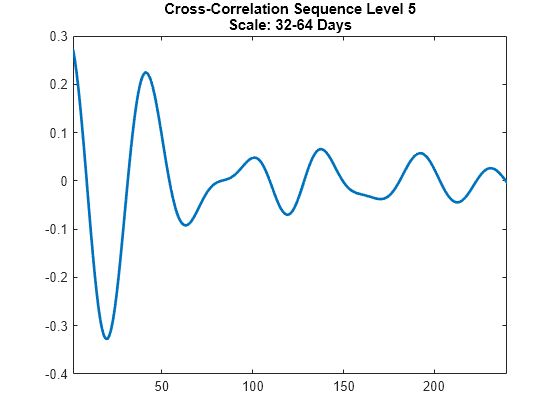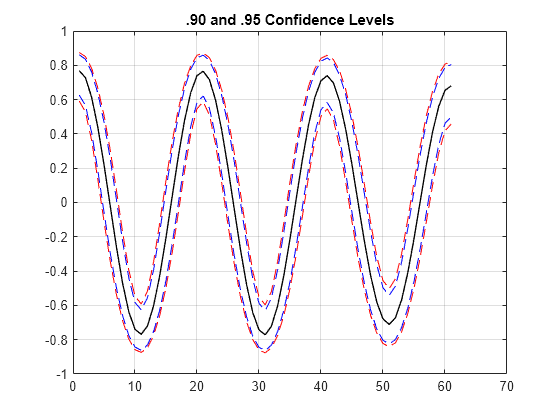modwtxcorr
Wavelet cross-correlation sequence estimates using the maximal overlap discrete wavelet transform (MODWT)
Syntax
Description
xcseq = modwtxcorr(w1,w2)w1 and w2. xcseq is
a cell array of vectors where the elements in each cell correspond
to cross-correlation sequence estimates. If there are enough nonboundary
coefficients at the final level, modwtxcorr returns
the scaling cross-correlation sequence estimate in the final cell
of xcseq.
[___] = modwtxcorr(___,'reflection') reduces
the number of wavelet and scaling coefficients at each scale by half
before computing the cross-correlation sequences. Specifying the 'reflection' option
in modwtxcorr is equivalent to first obtaining
the MODWT of w1 w2 with 'periodic' boundary
handling and then computing the wavelet cross-correlation sequence
estimates. Use this option only when you obtain the MODWT of w1 and w2 using
the 'reflection' boundary condition. You must enter
the entire character vector 'reflection'. If you
added a wavelet named 'reflection' using the wavelet
manager, you must rename that wavelet prior to using this option. 'reflection' may
be placed in any position in the input argument list after the input
transforms w1 w2.
Examples
Input Arguments
Output Arguments
References
[1] Percival, D. B., and A. T. Walden. Wavelet Methods for Time Series Analysis. Cambridge, UK: Cambridge University Press, 2000.
[2] Whitcher, B., P. Guttorp, and D. B. Percival. "Wavelet analysis of covariance with application to atmospheric time series." Journal of Geophysical Research, Vol. 105, 2000, pp. 14941–14962.
Version History
Introduced in R2015b




